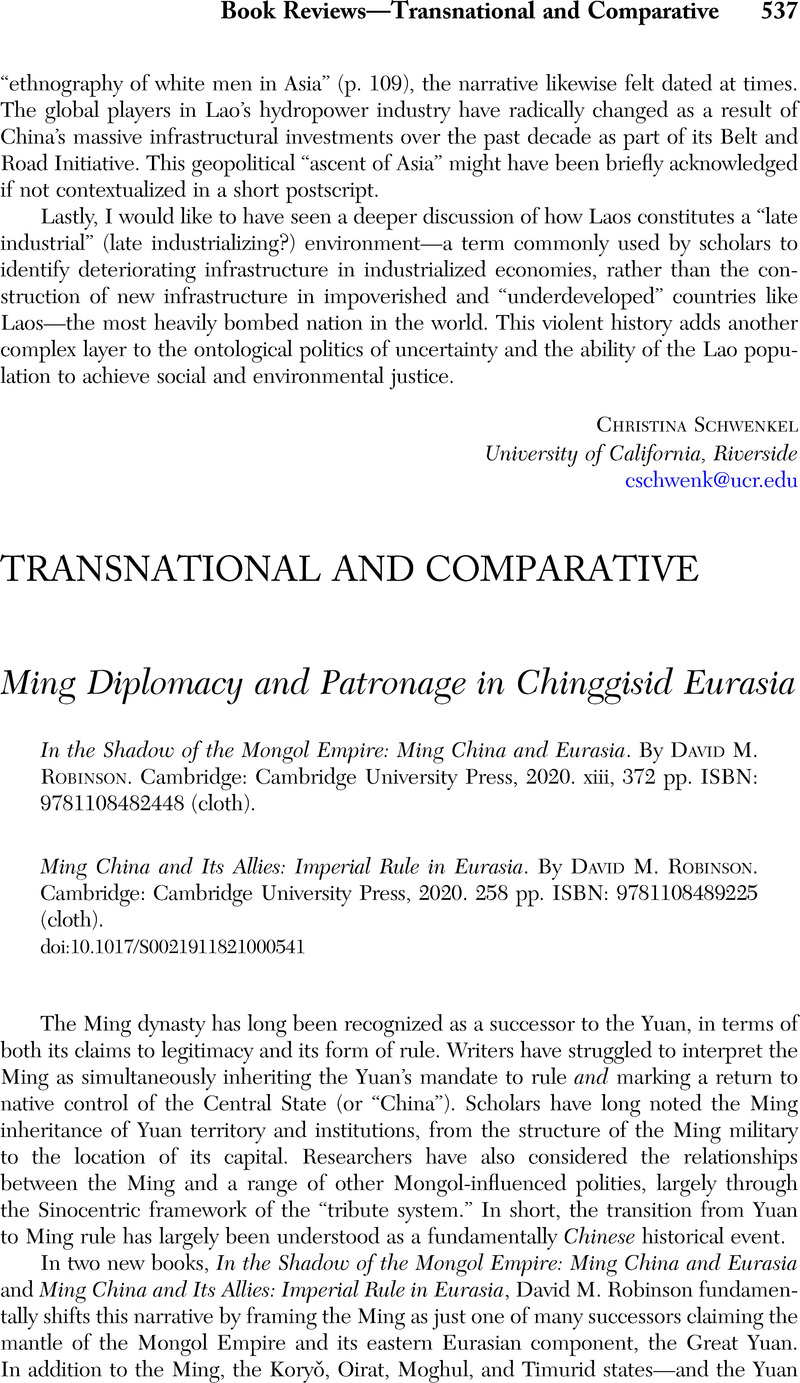No CrossRef data available.
Published online by Cambridge University Press: 17 May 2021

1 Robinson, David M., “Politics, Force and Ethnicity in Ming China: Mongols and the Abortive Coup of 1461,” Harvard Journal of Asiatic Studies 59, no. 1 (1999): 79–123CrossRefGoogle Scholar.
2 Zhongguo as “Central State”: Shadow of the Mongol Empire, pp. 193–955 (citing Ming Taizu shilu [MTZSL] 25.7b–8a, pp. 374–75), pp. 241–42 (MTZSL 141.5a–b), pp. 245–46 (MTZSL 244.2b–4a); zhongguo as “China”: Shadow of the Mongol Empire, pp. 198–99 (MTZSL 46.10b–11a, pp. 926–27), pp. 204–5 (MTZSL 77.51-b, pp. 1417–18), pp. 232–33 (MTZSL 71.1b–2a, pp. 1314–15). These and the following are selected examples.
3 Hu as “northern horsemen”: Shadow of the Mongol Empire, pp. 232–33 (MTZSL 71.1b–2a, pp. 1314–15); hu as “barbarian”: Shadow of the Mongol Empire, pp. 198–99 (MTZSL 46.10b–11a, pp. 926–27).
4 Yi as “barbarian”: Shadow of the Mongol Empire, pp. 196–97 (MTZSL 41.3a, p. 819), pp. 198–99 (MTZSL 46.10b–11a, pp. 926–27), pp. 241–42 (MTZSL 141.5a–b); yi as “foreigner”: Shadow of the Mongol Empire, pp. 232–33 (MTZSL 71.1b–2a, pp. 1314–15), p. 236 (MTZSL 92.7a–8a); yi as “outlander”: Shadow of the Mongol Empire, pp. 193–95 (MTZSL 25.7b–8a, pp. 374–75); yi as “Yi” or “yi”: Shadow of the Mongol Empire, pp. 212, 232–33 (MTZSL 71.1b–2a, pp. 1314–15).
5 Robinson, David M., “Justifying Ming Rulership on a Eurasian Stage,” in Ming China: Courts and Contacts 1400–1450, ed. Clunas, Craig, Yu-Ping, Luk, and Harrison-Hall, Jessica (London: British Museum Press, 2016), 205Google Scholar.
6 On “Great States,” see Brook, Timothy, “Great States,” Journal of Asian Studies 75, no. 4 (2016): 957–72CrossRefGoogle Scholar.